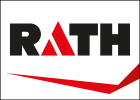Prices for float glass have gone up considerably since the beginning of the energy crisis due to the high energy needed to produce it. As it is the main raw material for insulating glass (IG), costs of IG production have increased drastically. If IG producers want to stay competitive within their markets, they need to look for other ways to reduce costs. Luckily, cutting energy costs is something that they can achieve today with the right and modern technology.
The main driver in today’s IG production is the need to reduce the total cost of ownership (TCO). To achieve this, all steps of the IG production process need to be optimized. Otherwise, wasted improvement opportunities will show up in monthly energy bills. Let’s review the most important ones here.
Glass washing and drying
Let’s start with the glass washing and drying process, one of the most energy-intensive steps in IG production. If you use the latest and most advanced washing and drying machine, the drying zone will automatically be switched off as soon as the glass plate has been dried and left this section. If there is no glass to be washed or dried, the ventilation flaps of the blower will be closed. This results in up to a 25% reduction in washing machine energy consumption.
The next target is to reduce water consumption in the glass washing process. This is achieved by using a closed water circuit with a disc filter system, reducing water consumption by up to 15 times the current rate and leading to additional energy savings.
In Glaston GLASS’WASHER machines, the drying zone will automatically be switched off as soon as the glass plate has been dried and left this section.
Conveyor systems
Roller-driven conveyor systems are indeed more energy efficient than air-cushion technology. However, if we include the high risk of scratching the glass – especially with Low-E coated glass – during the process, the costs of roller-driven conveyors are higher due to frequent glass quality issues. With Glaston’s modern air-cushion conveyor technology, glass quality is not compromised, allowing you to avoid remakes or reputational risks.
Components
In general, all component motors and drives should be efficient and state-of-the-art. Moreover, by using shared drives in modern IG lines, you can ensure that the only conveyor units running are those carrying glass at any specific moment. All others will be motionless. This reduces electrical power consumption significantly.
During drive deceleration, it is good practice to convert kinetic energy into electrical energy and feed it back into the network. This allows energy savings of up to 20%.
It is also preferable if the IG manufacturing equipment uses hydraulic and electric drives rather than pneumatic systems. These consume up to seven times less energy, meaning the facility can be operated at a significantly lower cost.
Top-level efficiency with TPS® technology
When improving the energy efficiency at your facility, a more radical technology update might be required. The most advantageous solution is the Thermo Plastic Spacer (TPS®) system. Glaston is the inventor of this technology, launched it in 1995, and has by far the most and longest-term experience with this system in the architectural glass industry.
With TPS®, IG manufacturers need only a single machine instead of several components to produce the IG units. The solution eliminates the need for other production machines, including bending, sawing, connecting, filling and butyl coating. Together, these systems need more electrical power than just one TPS®’APPLICATOR.
The TPS® system synchronizes several processes into one, making it possible to complete daily production earlier because of reduced cycle times. For example, if a considerable number of triple IG units can be produced in six hours instead of the previous eight, the savings is equal to two hours of energy consumption.
The new and patented TPS® drum pump system with a specially designed follower plate provides better insulation with its larger heating surface and avoids permanent heating up and down. This further contributes to remarkable energy savings.
TPS® ensures energy savings for end users, too. With its thermally improved edge seal for each insulating glass unit, less thermal heat is transferred to the outside and vice versa. Compared to IG units with conventional aluminum spacers, TPS® units have a 12% lower U-value and a 60% smaller linear heat transfer coefficient at the edge zone.
Summary
The increase in government and private initiatives aimed at energy-efficient buildings creates considerable growth opportunities for the insulating glass market – especially for triple insulating glass units.
Although growing demand sounds positive for IG manufacturers, it implies an increase in production costs, too. Given today’s energy and raw material prices, even small saving measures can make a significant difference.
With simple calculations, including cycle times, CO2 footprint, energy consumption figures and other parameters, it is easy to see how much more efficient state-of-the-art technology is. After all, we are in a competitive business where profitability depends on forward-thinking long-term investments.

























